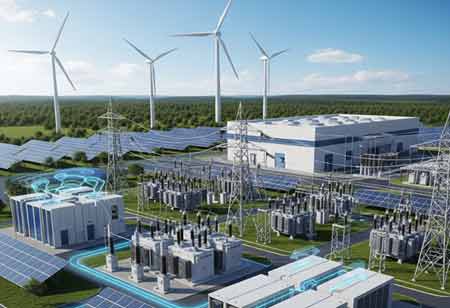CLOSE
Specials
I agree We use cookies on this website to enhance your user experience. By clicking any link on this page you are giving your consent for us to set cookies. More info
Be first to read the latest tech news, Industry Leader's Insights, and CIO interviews of medium and large enterprises exclusively from Energy Tech Review
Thank you for Subscribing
Designing Effective Energy Transition Platforms in Latin America
Latin America can lead the energy transition with robust platforms integrating data management, smart grids, and market mechanisms, but requires interoperability and strong collaboration for success.

By
Energy Tech Review | Wednesday, July 23, 2025
Stay ahead of the industry with exclusive feature stories on the top companies, expert insights and the latest news delivered straight to your inbox. Subscribe today.
Fremont, CA: Latin America, endowed with rich renewable resources, is uniquely positioned to lead the global energy transition away from fossil fuels. However, realizing this potential hinges on the development and effective deployment of robust "energy transition platforms" – integrated systems that streamline the entire process.
Core Features of an Effective Energy Transition Platform
At its core lies robust data management and analytics, enabling the collection, processing, and real‑time analysis of vast datasets. Advanced Metering Infrastructure (AMI) provides granular insights into consumption patterns. At the same time, Distributed Energy Resource (DER) management systems seamlessly integrate decentralized sources such as rooftop solar, small wind turbines, and battery storage into the grid to maintain stability and reliability.
A key enabler of this transition is smart grid integration, which modernizes existing infrastructure to support bidirectional energy flows and transform consumers into active “prosumers” who can sell excess electricity back to the grid. Demand response programs further enhance efficiency by incentivizing consumers to shift usage during peak periods, while automated grid management employs digital technologies for self‑healing networks, rapid fault detection, and optimized distribution.
Equally important are market mechanisms and financial tools that underpin investment and participation in the clean energy economy. Carbon accounting and trading platforms reward decarbonization efforts, while green finance initiatives, grants, and accessible funding channels attract capital for renewable energy projects. Transparent tariff structures further encourage efficient consumption and generation.
The Imperative of Interoperability in Latin America
The region’s energy landscape is shaped by a mosaic of regulatory environments, with each country operating under distinct policies, regulations, and market structures. Varying stages of development also mark it, as some nations have more advanced grid infrastructure and greater technological maturity than others. Geographical and climatic diversity further compounds these challenges, with energy needs and available resources differing vastly between dense urban centers and remote rural communities. Adding to this complexity is a rapidly expanding ecosystem of technologies and vendors, each bringing different systems and solutions to market.
In this context, the absence of substantial interoperability risks creating fragmented, inefficient, and costly energy platforms. By contrast, prioritizing interoperability offers transformative benefits. It enhances grid stability and reliability by enabling seamless communication between utility-scale renewables, distributed generation, storage systems, and demand-side management tools—an essential capability given the intermittency of renewable sources. It optimizes resource utilization, supporting efficient allocation of energy across regions and even facilitating cross-border trade to maximize renewable capacity. Interoperability also reduces costs and drives efficiency by avoiding vendor lock-in, encouraging competition, and promoting standardized data exchange that streamlines integration efforts. An open and interoperable ecosystem accelerates innovation, enabling new technologies and services to connect with existing infrastructure. It fosters greater data sharing and collaboration among utilities, regulators, consumers, and technology providers, leading to more informed decisions and coordinated strategies.
The successful energy transition in Latin America hinges on the strategic development and deployment of sophisticated energy transition platforms. These platforms must encompass comprehensive data management, smart grid integration, robust market mechanisms, and strong stakeholder collaboration. By embracing open standards, investing in modern infrastructure, and fostering cross-border cooperation, Latin America can truly emerge as a global leader in the clean energy revolution.

Copyright © 2025 Energy Tech Review. All rights reserved






